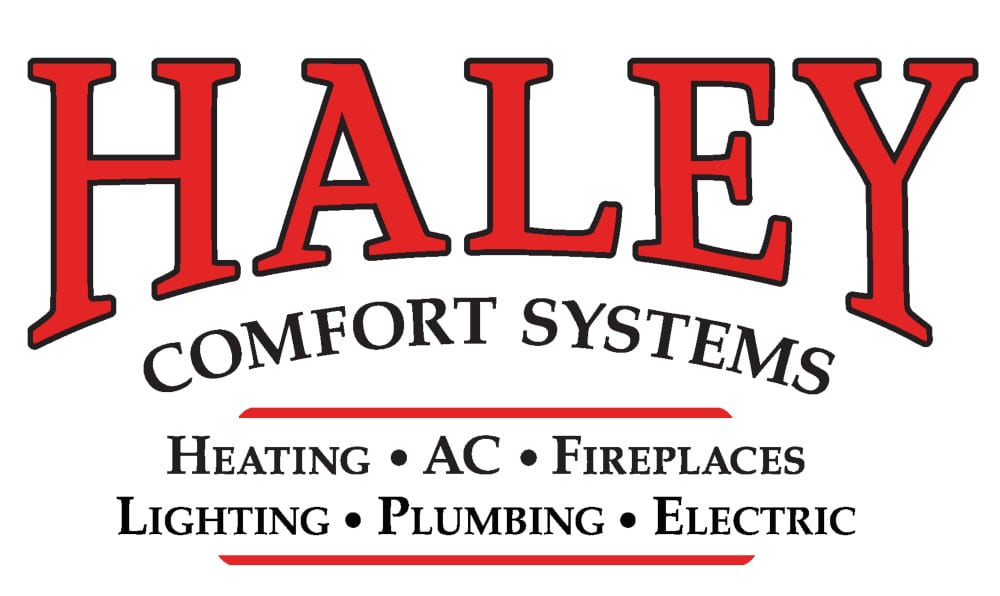Every homeowner has a utility room. However, many people do not fully know what is in their utility room. Peter Hassig, a project manager from Haley Comfort Systems, is here to talk about some different things you could see in a typical mechanical room.
What You May Find in Your Utility Room
- Furnace, coil, filter, zoning: The furnace is the main appliance in the utility room, and it heats your home. There is sheet metal that connects the side of your furnace and the top. This is called the ductwork, which is the cavity that circulates the air throughout the home. The metal that connects to the side of the furnace is called the return air. The return air is feeding air back into your furnace to circulate it to heat or cool your house. A filter separates the return-air ductwork and the furnace. This filter collects dust particles in order to keep your furnace cleaner, and the air in your home healthier. There are many different types of filters that have varying technologies and different price levels. After the air goes through the filter and into the furnace, it goes through the coil. The coil is what sits on top of the furnace; this is what cools your home in the summertime. The air conditioner is the appliance that sits outside of the house (condensing unit), but it also has the indoor coil that sits on top of the furnace. Both are needed in order to make the air conditioner function. Refrigerant lines connect the two, to maintain a nice comfortable temperature in the summertime. The sheet metal on top of the coil is called the supply ductwork. The supply does exactly what it sounds like; it supplies the home with the heated or cooled air throughout the ductwork, and it pushes it out of the registers.
- Properly designed ductwork is so important for the functionality of the furnace and the air conditioner. A good analogy is the human body. The furnace acts as the heart of the home. This is where all the vital organs (technology) lie. The ductwork is like the arteries and veins. Just like your bodies health, the veins and arteries of your home need to be clean, healthy, and be properly sized in order to feed the blood (heating and cooling) throughout your body (home). In the video, Peter discusses zoning. Some homes will have zoning throughout, and that allows you to have different thermostats in different parts of the house. We often see people have zoning in both levels of their home. This allows them to regulate each area at different temperatures providing optimal comfort.
- Many homes also have a humidifier. A whole home humidifier connects to the ductwork and essentially gives off water vapors that provides humidity to your home during the dry winter months. Adding a whole home humidifier eliminates the need to have portable humidifiers throughout the house, creating less clutter.
- In most newer homes, you will find a box that is mounted to the side wall or that hangs down from the ceiling. This is called an air exchanger. The purpose of an air exchanger is to bring air in and out of the house to provide proper ventilation. Because homes are built so air-tight now, they are not able to breathe as easily. The air in a home becomes stale, so an air exchanger will take fresh air from the outside and brings it inside, while taking air from the inside of the home, and sending it back outside.
- Every home will also have a water heater. There are a few different types of water heaters, but traditionally, they look like a big tank with copper piping connecting to the rest of the plumbing lines in the house. The water heater heats the water for your home. There are electric water heaters and gas water heaters. The heater in the video is a gas water heater. Gas heaters need to have a vent that takes the gas by-product and disposes it to the outside of the house. A gas furnace is the same way. Often, this is through a white PVC pipe. Less efficient models use a galvanized metal called B venting.
- Finally, a water softener is found in many homes. A water softener is not a requirement, but it can provide comfort when taking showers or doing laundry. They have many benefits, including but not limited to, preventing water scale build up. There are two tanks to a water softener, a mineral tank and a brine tank. The mineral tank stands taller than the brine tank. The brine tank is what holds the softener salt. This will remove the minerals from the hard water, monitor its flow, and clean the system through a regeneration process.
